The Bishop Museum is located in Honolulu, Hawaii. With over 100+ years of history collecting and displaying artifacts and biological specimens from the Pacific Basin, there’s so much to see and learn.
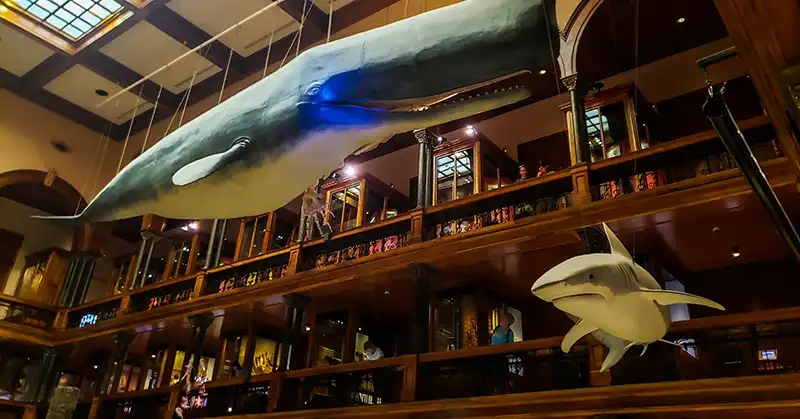
What’s in the Bishop Museum?
The Bishop Museum houses and cares for over 25 million historical, cultural, and natural treasures.
To say you can’t get through the museum in a day is an understatement!
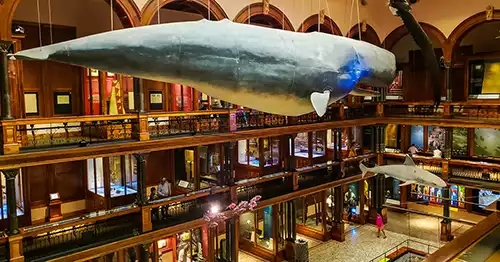
However, if you start with the Hawaiian Hall gallery, you’ll get a great introduction to the story of the islands.
The Hawaiian Hall gallery starts on the first floor with the legends, gods, and beliefs of pre-contact Hawaii. The second floor displays the relam where people live and work. And the third, Wao Lani, is the realm inhabited by the Gods.
Museum Departments
To gather and curate this comprehensive history, the Bishop Museum has around ten different departments.
They range from Ichthyology (started in 1889 with a small sampling of fishes), to Invertebrate Zoology (marine animals from various groups), to Archaeology (studies and artifacts of the cultural heritage of Hawai’i).
What would the Malacology Department study?
The Malacology department studies the land snails from the 25,000 islands of the Pacific Ocean. There are more than 6,000 land snail species here, most of which are only found on a single island or archipelago. Since there are so few members of each species, they have the highest extinction rate of any other group. This makes the museum’s collection even more important.
Signature Galleries & Planetarium
The Hawaiian Hall is just one of the Bishop Museum’s signature galleries. The first one you’ll see is an outdoor display of campus murals showcasing some of the most notable Hawaiian artists. You’ll also find a Native Hawaiian Garden outside to stroll through.
As you work your way through the many areas inside, you'll also find a picture gallery, a gallery with photos of the Hawaiian monarchy, and the 16,500 square-foot Richard T. Mamiya Science Adventure Center.
There’s also a planetarium – the J. Watumull Planetarium.
You can add the Planetarium show to a regular admission ticket, or purchase admission alone when you’re attending one of the special evening planetarium events.
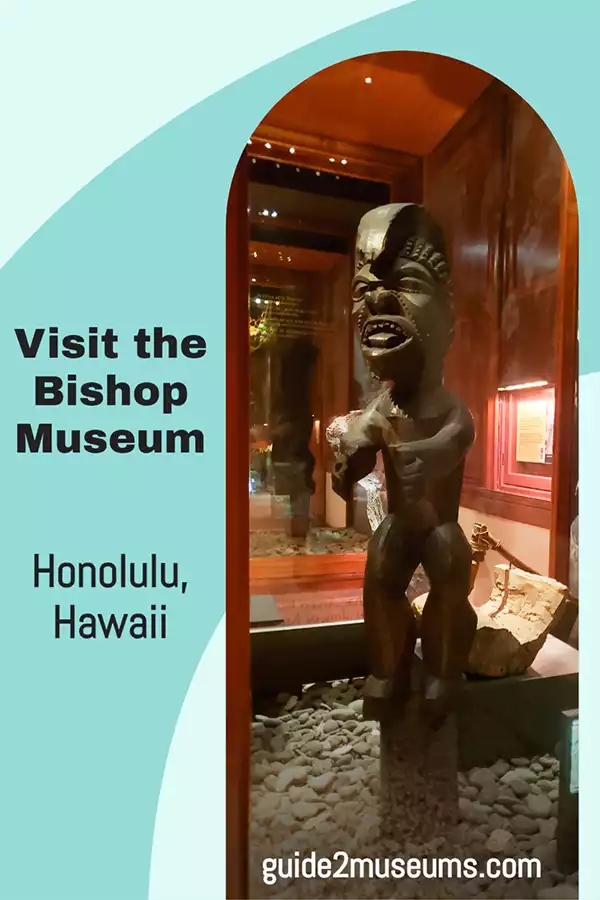
Linda’s Pick of the Exhibits
My favorite exhibit was on volcanoes, which was in the Science Adventure Center.

I had no idea that volcanoes in Hawaii were different than most other volcanoes on earth.
What’s the difference between volcanoes in Hawaii and most other places on earth?
In Hawaii there are shield volcanoes. With shield volcanoes the easily flowing basalt lava forms broad, gentle slopes. What you’ll find most other places are composite volcanoes, which are steep, cone-shaped volcanoes formed by explosive eruptions of cooler, thicker lava.
You’ll find two of the most active shield volcanoes on earth in Hawai’i, in Volcanoes National Park, which contains parts of Mauna Loa and Kīlauea.
I also didn’t realize volcanoes had life cycles.
- Birth: Eruptions piling on each other for a few hundred thousand years.
- Emergence: Volcano emerges from the sea with volcanic debris piling up about sea level eventually building a new island.
- Building a shield: Eruptions of fluid basalt lava add to the volcano’s gently sloped shield shape.
- Landslides: Sides may collapse as the volcano grows.
- Main eruptions end: Ocean floor beneath the volcano moves 3.5 inches (9 cm) a year, carrying the volcano off the magma supply.
- Volcano erodes: After eruptions stop, forces of erosion take over.
- Eruption begins again: Up to several million years later sporadic eruptions begin again creating smaller volcanic cones on top of the eroded slopes of the original volcano.
- Atoll forms: Erosion and sinking eventually reduce volcano to sea level with coral reefs growing around the sinking island to form an atoll.
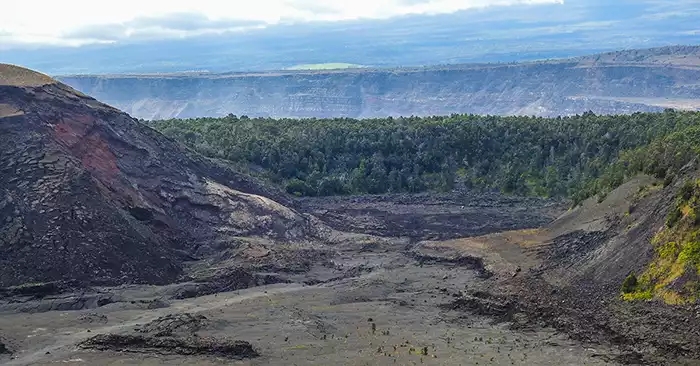
Linda’s Road Trip Tips
Honolulu was the disembarkation point for the NCL cruise we took from Vancouver, BC. We booked two days to see everything we wanted, staying one night at the Airport Honolulu Hotel, which offered a free shuttle.
The hotel was comfortable, if not luxurious. While the hotel’s Lazy Fish Lounge is only open from 5 pm until 10 pm, we found the food very tasty. And they had a nice selection of beers.
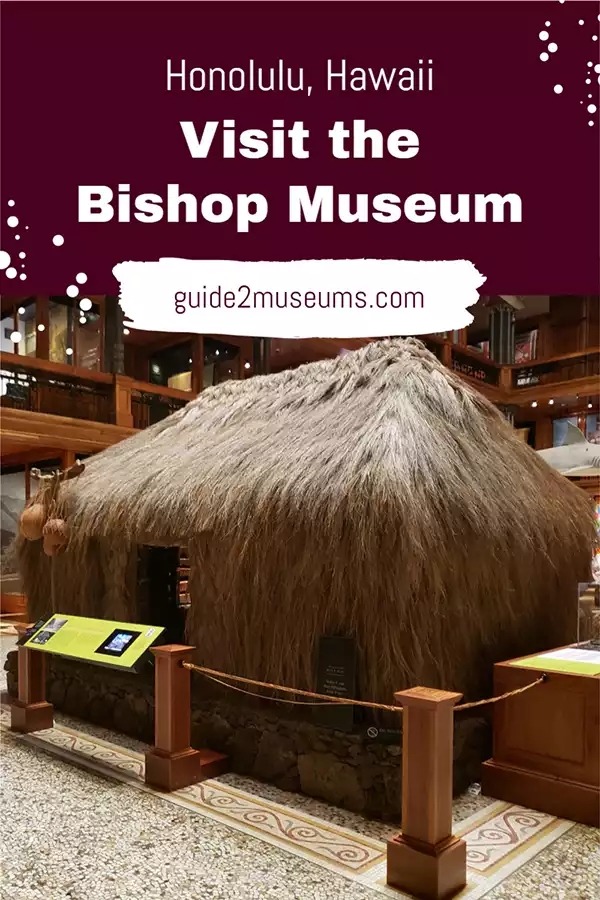
Of course, the Pearl Harbor Historic Sites generally top everyone’s list, as they’re a must-see.
I also wanted to see Waikiki Beach, and while we were there we went through the U.S. Army Museum at the U.S. Army Corps of Engineers, Honolulu District’s Pacific Regional Visitor Center.
The museum is located in Battery Randolph -- the Battery is a must see for WWII history. The good thing is that it's much less crowded than Pearl Harbor.
Who Should Visit the Bishop Museum?
If you’re in Honolulu, the Bishop Museum is a must-see attraction. With more than a century of curating the cultural and biological history of the Pacific Basin, the museum is fascinating.
While you’re visiting, do visit the Bishop Museum Café.
It’s located at the Museum entrance near the Planetarium and Shop Pacifica and can be accessed without an admission ticket.
Fast Fact: The Bishop Museum Cafe serves traditional Hawaiian foods to try including my favorite - Spam Musubi. What's that? Spam sushi!
I can guarantee that there’ll be something to fascinate every member of the family during your visit!
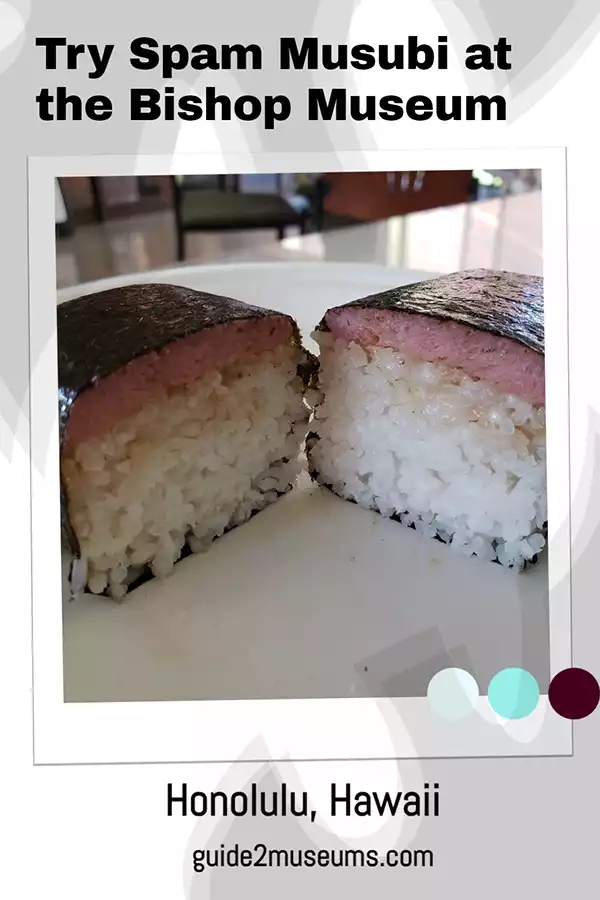
How Do You Visit the Bishop Museum?
Visit in person at 1525 Bernice Street, Honolulu, Hawai‘i.

Check out days and hours open at the Bishop Museum website.
Take virtual tours of the museum with the Bishop Museum YouTube channel.
Keep up-to-date with happenings on the Bishop Museum Facebook page.
Plan your visit with Google maps.
Discover More General Museums
- Largest Museum Rifle Collection in Western Canada

- Museum’s 25 Million Artifacts Reveal Hawaii’s Little Known History!

- Snowmobiles to Paul Bunyan: Wisconsin Museum

- Totem Poles to Chinatown: Unexpected Stories in the Nanaimo Museum

- Fossils to the Frontier in a Montana Museum

- Homesteader History Museum in Montana








